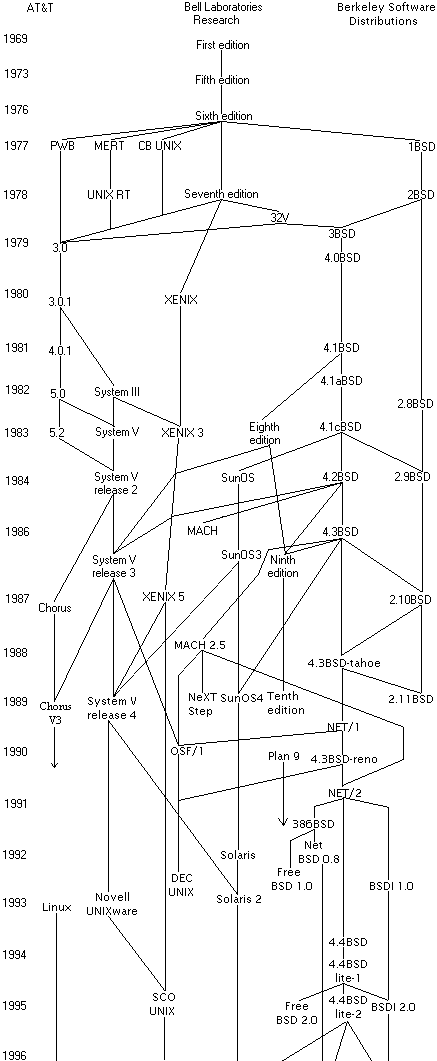This article was originally published at http://www.ehlis.com/adam/solaris/history.html yet was taken down so I have pulled a copy from the Wayback Machine.
The History of UNIX
Everyday I work with UNIX, I learn something new. As any UNIX veteran will tell you, "you'll never know everything about UNIX". UNIX is an Operating System that is constantly changing and an OS that has changed 10 fold since it's first day's, back in 1969. That's mainly due to how UNIX was originally developed.
In 1969, Bell Labs, a division of AT&T, developed a new Operating System. This Operating System was designed with the goal of all owing several users to access the computer simultaneously. This Operating System would later be known as UNIX. UNIX was origianlly programmed in assembly language, which didn't allow it to be ported to other Hardware platforms. So, in 1973, much of UNIX was rewritten in C, which allowed it to be more easily ported to other Hardware platforms.
Due to a Department of Justice injunction which didn't allow AT&T to sell software, AT&T provided many licensees with the software code and manuals, but didn't provide technical support. A major developer of the UNIX OS was one of these licensees. In 1974, The Computer Science Department at the University of California, Berkeley, began to use UNIX. In 1977, a Berkeley graduate student put together the first Berkeley Software Distribution (BSD) version of UNIX. A major development arose due to the BSD version of UNIX. Towards the end of the 70's, the Department of Defense began work on a decentralized computer network. This network had no one point of control, minimizing the threat of losing a network because it had been targeted by an enemy. This development led to the incorporation of LAN's using microcomputers in today's computing environment. On another note, that DOD network would later become the mother of today's World Wide Web.
While BSD was being developed by Berkeley, AT&T transferred it's UNIX development to Western Electric. Western Electric, began to prepare it's version of UNIX for marketing. In 1982, Western Electric would call it's version System III. Western Electric was under the assumption that if it had released it's version named System I, it would have lost sales, due to companies fearing that the new OS was full of bugs and would wait for a later version to be released, or purchase BSD UNIX. In 1983, System V was released. System IV was reserved for AT&T use only. Today, UNIX System V Release 4 is the latest release. This release is marketed by UNIX System Laboratories (USL), which is owned by Novell.
Since many different developers helped create UNIX, many earlier versions of UNIX were incorporated into other versions of UNIX, making the latest versions very versatile and very complex. Today, UNIX is used more than most people realize. UNIX is touted as being the backbone of the Internet. In fact, most Internet Service Providers (ISP) use UNIX servers. Due to this fact, the Internet, as we know it today would not exist.

Published by IDG Books Worldwide, 1996